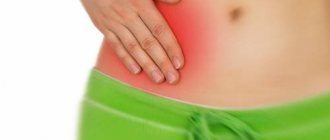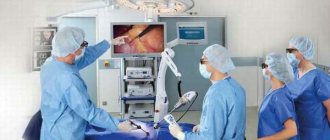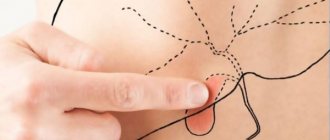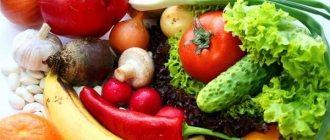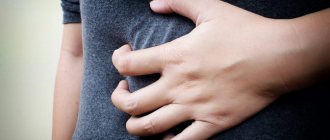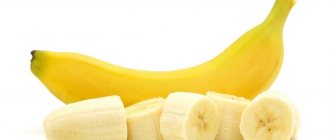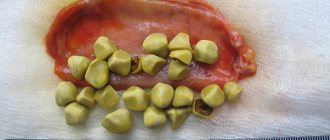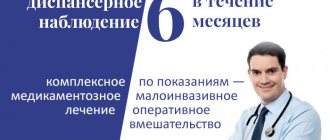In this article we will look at the main aspects of life after gallbladder removal.
This operation is quite common and not so complicated. However, especially in the early days after gallbladder removal, digestive problems may occur. After all, your body, namely the gastrointestinal tract, needs to do without such a small, but extremely important assistant. Although doctors now know that most people can live without a gallbladder without problems. And in this material we will consider all the issues that relate to this issue.
Life after gallbladder removal: pros and cons
Gallbladder removal surgery is usually not as serious as it seems. But you will need to make some changes to your diet to avoid digestive problems during your recovery. Remember that you will likely need several weeks or months to recover after gallbladder removal. But if you want to improve your overall health, there are some rules to follow.
Important: The most important advantage after removal of the gallbladder is the elimination of attacks and pain! And in order to feel healthy both physically and psychologically, you just need to reconsider your routine and rhythm of life!
Functions
- Diet changes recommended after gallbladder removal, such as adding fiber and healthy fats, are beneficial for most people with or without a gallbladder. It will also reduce your risk of developing digestive problems in the future due to the absence of a gallbladder.
- Previously, when people had to eat large amounts of fatty meat if the hunt was successful, in order to balance the sparse diet before and after, the gallbladder was an important organ. Large, high-fat foods needed strong bile to be digested well.
- However, these days the food supply is uniformly good, so many people even risk eating too much. With a daily intake of sufficient quantity and the desired quality of food, the gallbladder is no longer needed as a reservoir of bile juice. Most people receive bile juice, which is secreted directly from the liver into the intestines. And this is quite enough if you know when to stop!
In many people without a gallbladder, the upper region of the bile duct dilates so that some intermediate storage of bile juice occurs again.
Reasons for Removal
So you might think that the gallbladder has become a redundant organ these days. But this is not entirely true, because when you eat fatty foods, you feel the lack of it! In addition, its removal can change the intestinal microflora and cause some complications in this area. After all, bile neutralizes and prevents harmful bacteria from sticking to the walls, producing special mucus.
Generally, the complication rate is very low with gallbladder removal. Although, like any operation, this intervention has a small risk of complications, including:
- bile leak
- bleeding
- heart problems
- infection
- pneumonia
The following risks are common:
- difficulty digesting fat
- diarrhea and flatulence, constipation
- intestinal trauma
- jaundice or fever
Your risk of complications depends on your general health and the reason for gallbladder removal, as well as compliance with basic lifestyle changes! In addition, in women, PSEC (postcholecystectomy syndrome) occurs 2 times more often. Moreover, it can occur not only after surgery, but also after a long time.
During the rehabilitation period
What may bother a person in the first postoperative days?
The process of rehabilitation of the patient depends on the method by which cholecystectomy was performed. With laparoscopic removal, the patient recovers within 10–14 days. If the bladder is removed using a conservative method, the body will recover in 6–8 weeks.
The main symptoms of concern during this period:
- Nagging pain at the surgical site, which can be relieved by taking painkillers.
- Nausea as a consequence of anesthesia or other drugs, which passes quickly.
- Pain in the abdominal area, radiating to the shoulders, in the event of gas being introduced into the abdominal cavity during laparoscopy. They disappear after a few days.
- Due to a lack of bile, gases accumulate in the abdomen and loose stools occur. Symptoms may persist for several weeks. A diet is required to ease the load on the liver.
- Fatigue, mood swings and irritation due to impotence.
These manifestations disappear as the person recovers and have no effect on vital functions.
Life expectancy after gallbladder removal
- No one can give you the right answer to this difficult question. Everything depends on you! If, immediately after removal of the gallbladder, you begin to abuse fatty foods, coffee and alcoholic drinks, this will have a very bad effect on your health. And of course, it will negatively affect your life expectancy.
- But if you stick to a healthy lifestyle, diet , and only occasionally indulge in forbidden foods, your life will be long and happy. Many of those who have their gall bladder removed in their youth live to a ripe old age. At the same time, they allow themselves to drink wine and eat their favorite steak during the holidays. All in your hands.
- And as some consolation, even a healthy person needs to exclude from his diet most of the harmful, fried, smoked and other foods that contain chemical flavor and aroma enhancers! Otherwise, they will not remain healthy for a long time either.
Important: In 95% of cases, recovery is quick and the person feels normal, as if no operation had taken place. Therefore, many lead a habitual and incorrect lifestyle, often not paying attention to signals in the form of nagging pain in the right side and problems with digestion/stool.
For more than 100 years after such an operation, the majority of patients lived to a ripe old age.
What are the complications?
Cholecystectomy does not always bring relief to the patient; even strict adherence to all dietary recommendations does not save from unpleasant symptoms and a general deterioration in well-being. The first day the patient is under constant observation, since this period is especially important. There is an increase in temperature to febrile levels, and the release of bile during vomiting. Stool containing undigested fats becomes discolored, and dark urine may appear.
Prolonged vomiting slightly alleviates the condition, while the pain in the right hypochondrium is slightly reduced. These symptoms indicate a violation of the natural passage of bile and the development of congestion. Therapy for such conditions is carried out by correcting nutrition. The attending doctor explains to the patient how to live without a gallbladder and what consequences to expect if the diet is violated.
First of all, it is necessary to stabilize the outflow of bile and increase peristalsis of the intestinal tract. A diet that limits refractory fats and simple carbohydrates and increases the amount of protein can help with this. The diet is based on vegetables and sweet fruits containing large amounts of fiber. Regular use allows you to increase the secretion of secretions when eating food. For uncomplicated rehabilitation, it is necessary to maintain up to 80 g of fat in the diet per day, but the presence of complications requires increasing this figure to 120 g, while vegetable and animal fats must be present in equal quantities.
Proteins and carbohydrates remain the same as prescribed by diet number 5. Such nutrition after removal should be maintained for two months. After a month, you need to make sure that there is no congestion without a gallbladder, the consequences of which can lead to a sharp deterioration and colic. Only after this can you introduce new dishes into the diet and gradually return to your usual diet.
Read also: When can you plan a pregnancy without a gallbladder?
Digestion after gallbladder removal
- The amount of bile juice secreted by the liver is enough to digest a normal meal, at least for most people. Therefore, many can easily live without a gallbladder. You can even eat whatever you want.
- But this "eating what you want" is a relative concept. People who eat only moderately fatty foods, voluntarily or otherwise, usually have no problems with gallbladder life.
- But those who love a tasty and filling lunch and also have a penchant for pork knuckles may find themselves in the same health situation as serious life problems after gallbladder removal. Yes, there are people without a gallbladder who can easily digest fatty pork drumsticks, but sooner or later this will take its toll!
We understand how the bile production system works and the need for bile
What are the clinical manifestations of biliary gastritis?
Gastroduodenoscopy allows you to identify all the characteristic signs of bile reflux. There is focal hyperemia, swelling of the mucous membrane in the stomach, a predominance of yellow pigment in the contents of the stomach, and an open pyloric valve. A biopsy of mucous tissue reveals hyperplasia in the layer of pitted epithelium, death of some tissues, swelling of the epithelial plates, and the development of tissue atrophy.
Read also: What is gallbladder cholesterosis?
The degree and height of damage to biliary gastritis can be determined by endoscopic examination, as well as by regular monitoring of the acidity of the stomach. During the day, emissions of alkaline, acidic or mixed bile are measured. To confirm the data, an x-ray is taken in several positions of the patient, during which the regurgitation of barium into the stomach from the duodenum is determined.
Weight gain after gallbladder removal
It is often claimed that a person gets fat after having the gallbladder removed. But this is a very controversial and relative issue.
- If you were only able to eat very limitedly due to stones or severe pain in the gallbladder, you have lost most of the weight during this time (especially, do not forget about recovery from surgery). The body also became accustomed to low food intake and became satisfied with small amounts of food. After successful gallbladder surgery and rehabilitation, you can finally eat normally again. So it's a holiday. This feast naturally leads to significant weight gain.
- Those who have not changed their diet in any way and continue to indulge in unhealthy and high-calorie foods are also prone to weight gain. In any case, it leads to extra pounds, and then the body no longer digests it so well and quickly.
- Some people have better digestion after gallbladder surgery than before. Food moves faster through the intestines and metabolism becomes more active. This can easily lead to some weight loss.
- Other people have more digestive problems after gallbladder removal than before. They can only eat low-fat foods and often have diarrhea. These people may also even lose weight.
Therefore, as a conclusion, weight gain does not always occur after gallbladder removal. Much depends on your body, or rather the consequences. But they are mostly related exclusively to your lifestyle!
Rules
How does the functioning of the digestive system change?
In life after removal of the gallbladder, its function must be performed by the ducts in the liver. However, they cannot do this, and therefore characteristic changes arise:
- increased pressure in the ducts;
- spasm of the sphincter of Oddi;
- metabolic and digestive disorders;
- the damaging effect of bile on the intestines;
- development of diseases in neighboring organs (pancreas, duodenum, stomach).
The main mechanism by which symptoms arise in life without a gallbladder is increased pressure in the bile ducts of the liver. Following this, stagnation of bile occurs due to spasm of the sphincter of Oddi. In this case, there is a lot of bile in the ducts, the sphincter cannot hold it, and it spontaneously flows into the intestines.
Bile in its pure form has a strong damaging effect on the intestinal mucosa. It can cause the formation of ulcerative defects on the intestinal wall and even cancer. Therefore, it is so important after cholecystectomy to eat often and in small portions in order to neutralize the aggressive effect of bile on the intestinal mucosa.
Among the metabolic disorders, it is necessary to note the absorption of fats and bile acids, which in itself further worsens the human condition. Due to spasm of the sphincter of Oddi, inflammation of the pancreas - pancreatitis - may occur due to the common anatomical structure of the ducts. The motility of the intestine itself is impaired, which will also lead to the backflow of intestinal contents into the pancreatic ducts and the same pancreatitis.
It should be remembered that cholecystectomy is a step of despair when it is impossible to cure the disease in other ways. For example, cholelithiasis is a systemic disease of the whole body, cholecystitis is only one of the manifestations of this pathology.
The question is often asked: “I had my gallbladder removed, how should I live now? Is there really nothing that can be done? Although there are many reasons for the development of postcholecystectomy syndrome, it does not develop as often as is commonly thought.
What foods should you avoid after gallbladder removal?
There is no standard diet that people should follow after gallbladder removal. Most people can maintain a normal diet after surgery. But in general, it's best to avoid fatty, processed and sugary foods. But if there are digestive problems such as bloating, pain or diarrhea, you should follow a few rules to stop the problems.
The most important basic rules in a diet without a gallbladder:
- Avoid large dishes. Eat only small portions
- Avoid fatty foods
For many people without a gallbladder, these two basic rules are enough to live without pain.
Foods that should be avoided for the first 2 years or limited to consuming them no more than 1-2 times a week
Eating these foods after gallbladder removal will not cause serious health problems, but may lead to a lot of painful gas, bloating, and diarrhea. This is partly due to the fact that bile, freely flowing into the intestines, acts as a laxative. For the first 1-2 years you should absolutely not load your stomach with them, after which you can sometimes indulge yourself.
- Fatty meats that are processed or contain a lot of fat can cause digestive problems after gallbladder removal. These types of meat include: steaks or fatty cuts of red meat
- pork
- mutton
- bacon and any kind of lard
- lunch meats such as bologna and salami
- sausage of any kind, especially smoked
Diet
- Dairy products are also difficult for the body to digest, especially if they are regulated without a gallbladder. Try to avoid or limit your intake of: milk, especially whole milk
- full fat yogurt
- fat cheese
- butter
- sour cream
- ice cream
- whipped cream
- creamy sauces or gravies
If stopping dairy isn't feasible for you, try choosing low-fat yogurt, milk and low-fat cheeses. Options containing dairy alternatives such as almond milk are also suitable.
- Baked goods often contain a lot of extra fat and sugar. This allows them to be stored longer. But they are also difficult to digest and don't offer many nutrients. Try to stay away from: Pies
- cupcakes
- cookies
- cinnamon rolls
- sweet cereal
- white or freshly baked bread
- products prepared with vegetable or hydrogenated oils
Products that should be excluded from the diet of patients after permanent removal of the gallbladder :
- legumes - cause strong gases and flatulence, and also contain coarse fiber;
- onions - you should not eat raw onions, but boiled and stewed ones are fine;
- garlic - cannot be eaten raw, it can cause severe pain;
- ginger - it stimulates the production of bile and the movement of stones;
- radishes and radishes, as they irritate the stomach;
- Wasabi, like other spicy foods or spices, should not be consumed!
These are the foods you shouldn’t experiment with, just eliminate them from your diet.
- Caffeine contains acids that can cause your stomach to produce more acid and drain faster. This can lead to abdominal pain and discomfort after gallbladder removal. Limit or avoid these caffeinated foods and drinks: coffee
- strong black tea
- energetic drinks
- caffeinated snacks such as energy bars or coffee desserts
- chocolate and any confectionery containing cocoa
Forbidden!
Gallbladder: its functions in the body
The gallbladder is a small, pear-shaped organ. It does not exceed 14 cm in length (the norm is a length from 8 cm to 14 cm), and only 3-5 cm in width.
Its main task is the accumulation and storage of bile, which is formed in liver cells. It holds up to 70 cubic centimeters of bile. While here, bile acquires a thicker texture, after which it is evacuated through the bile ducts into the intestines through the sphincter of Oddi, where it takes part in the breakdown of food.
Functions of the gallbladder:
- Cumulative, or depositing. This is where all the bile produced by the liver is collected.
- Concentration boils down to thickening of bile.
- Tow truck. When the gallbladder contracts, pushing out the contents, it flows through the ducts into the duodenum. In this case, bile is not released constantly or at certain intervals, but only when it is necessary for the breakdown of food. If this function is impaired, the bile stagnates and becomes excessively thick. Over time, this leads to the formation of sand and stones.
Bile is needed to break down food. It is also a powerful antiseptic - it disinfects the contents of the intestines, kills most pathogenic and excess opportunistic bacteria. It is thanks to her that a person does not get an intestinal infection every time he eats a product that is not perfectly fresh or clean.
In the duodenum, it creates an alkaline environment that is destructive for the larvae of most helminths. If the bile is sufficiently concentrated, the function of the gallbladder is not impaired - a person manages to avoid infection with helminths even if they enter the intestines with food.
It is also responsible for the breakdown and absorption of fats, stimulates intestinal motility, and participates in the formation of intra-articular fluid.
Violation of the outflow of bile, its insufficient quantity lead to digestive disorders. Such patients often have constipation, intestinal dysbiosis, and impaired fat absorption.
When the outflow of bile is disrupted, inflammation of the gallbladder develops, a sediment appears, which eventually collects into stones. To relieve inflammation and prevent the formation of stones, choleretic drugs are prescribed.
Alcohol and smoking after gallbladder removal
You should not just abstain from alcohol and smoking, but completely eliminate them from your life after gallbladder removal. However, people who have undergone surgery are often interested in the question of whether it is possible to at least partially deviate from the rules.
- Is it worth allowing yourself a little alcohol - perhaps only in honor of the holidays or on special occasions. In any case, there should be complete abstinence from drinking alcoholic beverages for at least a year. That's what all nutritionists say.
- And only after 1.5-2 years you will be able to gradually drink a glass of dry or semi-dry wine. Other drinks with high alcohol content are strictly prohibited. Even if you think that nothing will happen if you do not follow a diet after removal of the gallbladder, the answer is simple - poor health and deterioration of the body with pathological consequences due to a large accumulation of bile!
- Smoking has a bad effect on the health of even a healthy person. And after removal of the gallstone, it is strictly prohibited! Complete abandonment of this habit is a prerequisite for successful recovery of the operated organism after such an operation and longevity.
Complete ban on beer and smoking!
How to live without a gallbladder, is physical activity possible?
A month and a half after the operation, it’s time to start exercising. It is best to start with walking; 30-40 minutes of walking in the fresh air prevents bile stagnation and improves oxygen saturation of the body. And after a few days you can do light exercises. After 2-3 minutes of walking, perform the exercises in a lying or standing position, repeating 4-6 times.
- Lying on your back, legs straight, arms along the body. As you exhale, bend your leg, bringing it as close to your stomach as possible, and while inhaling, straighten it. Also with the other foot.
- Lying on your back, hands on your belt, as you exhale, lift and move your straight leg to the side, while inhaling, lower it. Also with the other foot.
- Lying on your back, legs bent, arms along your body. As you inhale, slide your heels along the floor, slowly stretch your legs, and as you exhale, bend them just as slowly.
- Lying on your side, legs straight, one hand on your belt, the other behind your head. As you exhale, bend the leg lying on top, and while inhaling, straighten it. Do the same by turning to the other side.
- Standing, feet shoulder-width apart, hands to shoulders, make circular movements with your elbows 8-10 times forward and back. Breathing is voluntary.
- Standing, feet shoulder-width apart, hands on your belt. As you inhale, move your elbows back, and as you exhale, return to the starting position. 6-8 times. Or turn your body left and right, spreading your arms to the sides.
Bends, lifting the legs and body from a lying position, and other abdominal exercises are allowed no earlier than six months after the operation and if you are in good health. And heavy physical activity, especially associated with tension in the abdominal muscles, can be done only after a year in order to avoid the formation of a postoperative hernia.
Ask questions about the article in the comments; if you want to contact me personally and confidentially, click the “Ask a Question” button at the top. Initial consultation is free.
Health to you, dear readers!
These Foods Help Digestion After Gallbladder Removal
A diet low in fat and easily digestible foods may help with complaints after gallbladder removal. While it's best to avoid certain foods when you don't have a gallbladder, there are still plenty of things you can and should eat.
Important: The main emphasis is that you are only allowed boiled or baked foods! Completely eliminate fried or even stewed foods! We also avoid marinades, especially those with acetic or other acid.
- High fiber foods. Fiber can improve digestion in the absence of concentrated bile. Just gradually increase your intake to avoid overdoing it immediately after surgery, as this can also cause gas. Below are healthy sources of fiber and many other nutrients such as calcium, B vitamins and omega-3 fatty acids: Buckwheat
- Brown rice
- pearl barley
- oats
- bran
- Plus, you can get it from most fruits or vegetables!
As you recover from surgery and need more fiber, try to include as many nutrient-dense fruits and vegetables in your diet as possible. The following foods are good sources of the antioxidant vitamin A, fiber, immune-boosting vitamin C, and many phytonutrients that help your body recover.
- cauliflower, leaf and Brussels sprouts (but you can’t eat too much or too often)
- citrus fruits, only orange and lime (after 2 months)
Pomegranate, persimmon, grapes and pineapple should be excluded from your diet, and try only six months later! It is better to administer berries 2 weeks after surgery.
Can!
- Lean meat or meat alternatives.
Of course, meat protein is indispensable for our body, so it is worth including it. Just choose not fatty pork or lamb, but the following types: chicken breast - also turkey fillet
- rabbit meat
- horsemeat
- veal
- lean beef
- white fish such as halibut
Drink plenty of purified water, rose hip decoction, dried fruit compote and kefir.
Diet No. 5
General recommendations and advice on diet after gallbladder removal
Making some small changes to your diet after gallbladder removal will go a long way toward restoring your health. In addition to exchanging some products for others, you can also try the following tips:
- Do not start on solid foods immediately after surgery. Slowly introduce solid foods back into your diet to prevent any digestive problems. At first, the pureed form is acceptable.
- Eat small meals throughout the day. Eating large amounts of food at once can cause gas and bloating, so separate your meals. Try to have 5-6 small meals a day, spaced several hours apart. Eat nutrient-dense, low-fat, high-protein snacks between meals. Try not to eat more than 3 grams of fat per meal.
- Substitute basic ingredients in recipes. For example, use banana instead of eggs when baking - the effect will be the same! And instead of some spices, it is better to add flax seeds steamed with boiling water.
- Choose only low-fat foods and prepare them properly. After gallbladder removal, avoid high-fat, fried or spicy foods. Choose the best low-fat foods and steam or boil them.
- Eliminate foods that are difficult to digest and bulky. Such as legumes, stewed cabbage, or tons of raw food. They may lead to increased digestive discomfort if consumed in large quantities and immediately after surgery.
- Take your time, eat slowly. Another valuable tip for easing digestion is to take time to eat and chew your food thoroughly.
- Consider following a vegetarian diet. Meat and dairy products, especially fatty ones, are often difficult to digest without a gallbladder.
Keep a diary and monitor the effects of nutrition after gallbladder removal!
- Of course, the digestibility of individual foods varies from person to person, so after gallbladder surgery, the foods presented here may cause digestive problems. To get an idea of your own digestibility and create a personalized nutrition plan for your gallbladder, it is useful to keep a food diary.
- You can track when you start eating food again and how it affects you. This will help you know what you can and cannot eat comfortably. Most people can return to a normal diet within a month after surgery.
We also recommend reading our article “Beneficial and harmful foods for the liver and gallbladder”
Important Rules
Treatment
Biliary gastritis discovered in a patient requires complex treatment. It begins with changing the patient’s diet and using medications. Therapy is aimed at eliminating reverse reflux, reducing the aggressiveness of refluxate, improving the secretion secreted by the stomach, and regenerating diseased tissues. It is necessary to maintain sphincter tone and cleanse the stomach.
Inna Lavrenko
auto RU
Medicines
Complex drug treatment involves courses of taking the following drugs:
| № | Helpful information |
| 1 | Contraloc, Pariet and Nexium to reduce the synthesis of hydrochloric acid |
| 2 | means for transforming bile into its water-soluble forms |
| 3 | Cisapride and Motilium to relieve backflow of food masses |
| 4 | Ursofalk and Ursoliv containing ursodeoxycholic acid to reduce bile concentrations |
| 5 | lactulose and medicines with bifidumbacteria to improve intestinal microflora |
| 6 | Maalox and Phosphalugel for bile ligament with lysolycetin |
| 7 | Sucralfate, a cytoprotector that helps improve the production of bicarbonates and mucin |
| 8 | Metoclopramide for stable motility in the intestinal and gastric tract |
| 9 | complex of vitamins and minerals |
| 10 | reparants for the regeneration of affected mucous tissues |
Treatment with folk remedies
When treating with home remedies, patients often choose traditional medicine recipes. The most proven are potato decoctions, celery juice, dandelion syrup, and herbal teas. If the disease is severe, then there is no point in taking herbal decoctions; you need to have surgery. In the presence of reverse reflux due to bile reflux, herbal tinctures alleviate the condition. Each plant should be tested for allergies.
- dandelion flowers with sugar are placed in layers in containers, the resulting syrup is taken in three doses, you can add chamomile;
- a decoction of potatoes, which are washed but not peeled. The peel contains the bulk of the nutrients. The potatoes are boiled for an hour, finely chopped. The decoction is taken several times a day;
- raw potato juice from grated root vegetables. The mass is squeezed out, the juice is drunk several times a day;
- celery is squeezed out and taken in the form of juice, one tablespoon at a time;
- herbal mixture of St. John's wort and mint, yarrow. Brew in a thermos and take small sips throughout the day.
Read also: How to treat suspension in the gallbladder?
Is it possible to exercise after gallbladder removal?
- Immediately after surgery, it is better to avoid doing housework because it causes contraction of the abdominal muscles, which increases bowel movement and causes loose stools.
- It is prohibited to lift weights exceeding 3 kg. This activity causes increased pressure in the abdomen.
- If the operation is performed laparoscopically (which has been standard in recent years) and the incisions to stimulate the gallbladder are not too large, you can start exercising again relatively early.
- Many surgeons allow their active patients to cycle and swim again after 8 days. Running usually takes a little more than a week to resume. After all, the wound still hurts while walking.
- Strength training is recommended for patients only after 3-4 weeks. Of course, each person is individual and must be assessed individually. And you also have a surgeon for this.
- If you were inactive before surgery, your recovery may take longer. Therefore, do not rush to load your body even with long walks. Various sports greatly strain the scars, so surgeons give the following recommendations: from 2 weeks , light sports such as hiking and swimming;
- from 3 weeks intermediate sports such as cycling and jogging;
- from 4 weeks all ball games such as football, handball, tennis, golf and any other sport.
